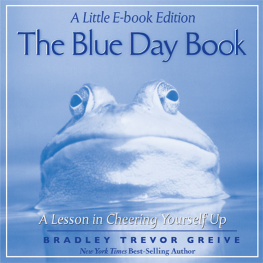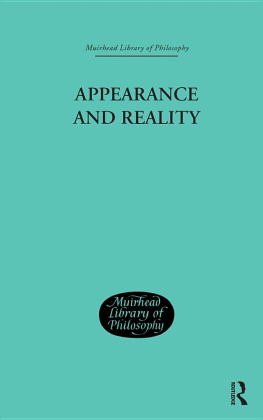Bradley Nassif - Bringing Jesus to the Desert
Here you can read online Bradley Nassif - Bringing Jesus to the Desert full text of the book (entire story) in english for free. Download pdf and epub, get meaning, cover and reviews about this ebook. year: 0, genre: Religion. Description of the work, (preface) as well as reviews are available. Best literature library LitArk.com created for fans of good reading and offers a wide selection of genres:
Romance novel
Science fiction
Adventure
Detective
Science
History
Home and family
Prose
Art
Politics
Computer
Non-fiction
Religion
Business
Children
Humor
Choose a favorite category and find really read worthwhile books. Enjoy immersion in the world of imagination, feel the emotions of the characters or learn something new for yourself, make an fascinating discovery.

- Book:Bringing Jesus to the Desert
- Author:
- Genre:
- Year:0
- Rating:4 / 5
- Favourites:Add to favourites
- Your mark:
- 80
- 1
- 2
- 3
- 4
- 5
Bringing Jesus to the Desert: summary, description and annotation
We offer to read an annotation, description, summary or preface (depends on what the author of the book "Bringing Jesus to the Desert" wrote himself). If you haven't found the necessary information about the book — write in the comments, we will try to find it.
Bringing Jesus to the Desert — read online for free the complete book (whole text) full work
Below is the text of the book, divided by pages. System saving the place of the last page read, allows you to conveniently read the book "Bringing Jesus to the Desert" online for free, without having to search again every time where you left off. Put a bookmark, and you can go to the page where you finished reading at any time.
Font size:
Interval:
Bookmark:

B RINGING J ESUS
TO THE DESERT
Uncover the Ancient Culture, Discover Hidden Meanings.

BRADLEY NASSIF

For Melanie, my beloved daughter.
May their wisdom be yours.

EVERY COMMUNITY of Christians throughout history has framed its understanding of spiritual life within the context of its own culture. Byzantine Christians living in the fifth century and Puritan Christians living over a thousand years later used the world in which they lived to work out the principles of Christian faith, life, and identity. The reflex to build house churches, monastic communities, medieval cathedrals, steeple-graced and village-centered churches, or auditoriums with theater seating spring from the dominant cultural forces around believers.
Even the way we understand faith in Christ is to some degree shaped by these cultural forces. For instance, in the last three hundred years Western Christians have abandoned seeing faith as a chiefly communal exercise (this is not true in Africa or Asia). Among the many endowments of the European Enlightenment, individualism reigns supreme; Christian faith is a personal, private endeavor. We prefer to say, I have accepted Christ as my Savior, rather than define ourselves through a community that follows Christ. Likewise (again, thanks to the Enlightenment), we have elevated rationalism as a premier value. Among many Christians faith is a construct of the mind, an effort at knowledge gained through study, an assent to a set of theological propositions. Sometimes even knowing what you believe trumps belief itself.
To be sure, many Christians today are challenging these Enlightenment assumptions and are seeking to chart a new path. Nevertheless, the new path charted is as much a by-product of modern cultural trends as any other feature. For example, we live today in a highly therapeutic society. Even if we are unaware of the discipline of psychology, we are still being shaped by values it has brought to our culture over the last hundred years. Faith today has an emotional, feeling-centered basis. Worship is measured by the emotive responses and the heart. The felt needs of a congregation shape many sermons.
Therefore, defining Christian faith as a personal choice based on well-informed convictions and inspired by emotionally engaging worship is a formula for spiritual formation that may be natural to us, but it has elements that are foreign to the experience of Christians in other cultures or other centuries. I imagine that fifth-century Christians would feel utterly lost in a modern church with its worship band and theater seating where lighting, sound, refreshments, and visual media are closely monitored. They might wonder if this modern church was chiefly indebted to the entertainment industry, like a tamed, baptized version of Romes public arenas. They might also wonder how ten thousand people can gain any sense of shared life or community when each family comes and goes by car, lives long distances away, and barely recognizes the person sitting next to them.
If it is true that every culture provides a framework in which the spiritual life is understood, the same must be said about the ancient world. The setting of Jesus and Paul in the Roman Empire was likewise shaped by cultural forces quite different from our own. And if we fail to understand these cultural forces, we will fail to understand many of the things Jesus and Paul taught.
This does not mean that the culture of the biblical world enjoys some sort of divine approval or endorsement. We do not need to imitate the biblical world in order to live a more biblical life. This was a culture that had its own preferences for dress, speech, diet, music, intellectual thought, religious expression, and personal identity. And their cultural values were no more significant than are our own. Modesty in antiquity was expressed in a way we may not understand. The arrangement of marriage partners would be foreign to our world of personal dating. Even how one prays (seated or standing, arms upraised or folded, aloud or silent) would have norms dictated by culture.
But if this is true if cultural values are presupposed within every faithful community, both now and two thousand years agothen the stories we read in the Bible may presuppose themes that are obscure to us. Moreover, when we read the Bible, we may misrepresent its message because we simply do not understand the cultural instincts of the first century. We live two thousand years distant; we live in the West and the ancient Middle East is not native territory for us.
This means we must be cautious interpreters of the Bible. We need to be careful lest we presuppose that our cultural instincts are the same as those represented in the Bible. We need to be culturally aware of our own place in time and we must work to comprehend the cultural context of the Scriptures that we wish to understand. Too often interpreters have lacked cultural awareness when reading the Scriptures. We have failed to recognize the gulf that exists between our present-day situation and the context of the Bible. We have forgotten that we read the Bible as foreigners, as visitors who have traveled not only to a new geography but to a new century. We are literary tourists who are deeply in need of a guide.
The goal of this series is to be such a guide to explore themes from the biblical world that are often misunderstood. In what sense, for instance, did the physical geography of Israel shape its peoples sense of spirituality? How did the storytelling of Jesus presuppose cultural themes now lost to us? What celebrations did Jesus know intimately (such as a childs birth, a wedding, or a burial)? What agricultural or religious festivals did he attend? How did he use common images of labor or village life or social hierarchy when he taught? Did he use humor or allude to politics?
In many casesjust as in our worldthe more delicate matters are handled indirectly, and it takes expert guidance to revisit their correct meaning. In a word, this series employs cultural anthropology, archaeology, and contextual backgrounds to open up new vistas for the Christian reader. And if the average reader suddenly sees a story or an idea in a new way, if a familiar passage is suddenly opened for new meaning and application, then this effort has succeeded.
This is the fourth book in the Ancient Context, Ancient Faith series. In previous books we explored how the biblical world shaped the spirituality of those who lived within it. We examined the cultural landscape, the parables of Jesus, and encounter stories where Jesus transformed the lives of individuals.
I was delighted when Dr. Bradley Nassif agreed to write this volume because it is an area of technical knowledge that frankly requires a specialized expert and Dr. Nassif is such a scholar. Following the New Testament era, Christians wanted to return to the Middle Eastern deserts in order to recreate a spirituality shaped by the cultural forces that influenced Jesus and his followers.
While an indigenous Middle Eastern church from Syria to Egypt flourished in these regions, we know little of their everyday life. However, another fascinating movement was born that we know a great deal about. Christian leaders entered the desert wastelands of Syria, Palestine, and Egypt and there explored a spirituality foreign to us today. In many cases, they returned from the desert as saints. Their experiences and writings resonate closely with the biblical world, and from their teachings we can learn a great deal. Dr. Nassif will be our guide through this terrain. Not only is he a Middle Easterner himself, but he has built his career studying these very movements from antiquity.
Font size:
Interval:
Bookmark:
Similar books «Bringing Jesus to the Desert»
Look at similar books to Bringing Jesus to the Desert. We have selected literature similar in name and meaning in the hope of providing readers with more options to find new, interesting, not yet read works.
Discussion, reviews of the book Bringing Jesus to the Desert and just readers' own opinions. Leave your comments, write what you think about the work, its meaning or the main characters. Specify what exactly you liked and what you didn't like, and why you think so.








